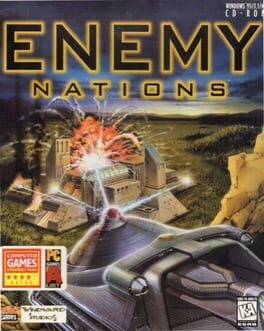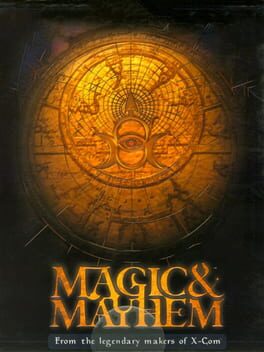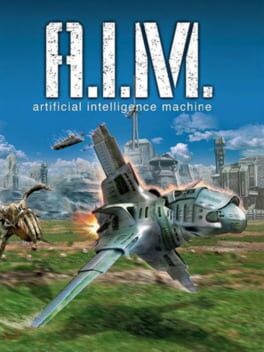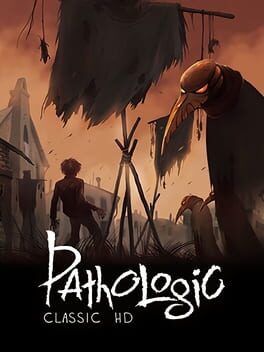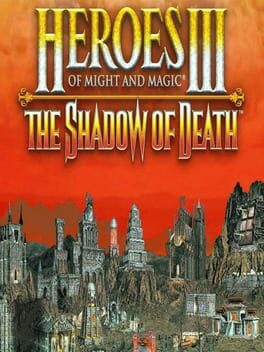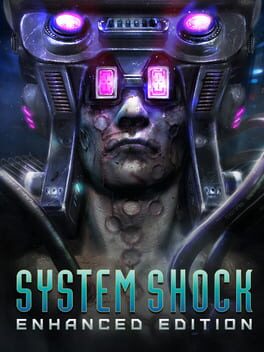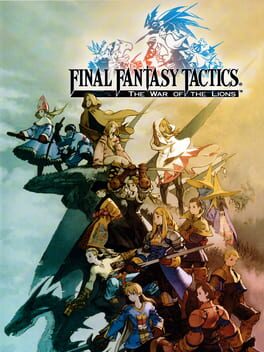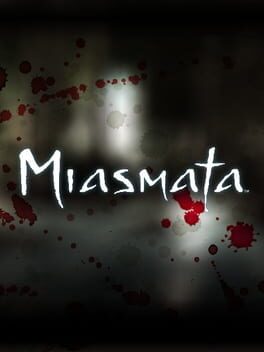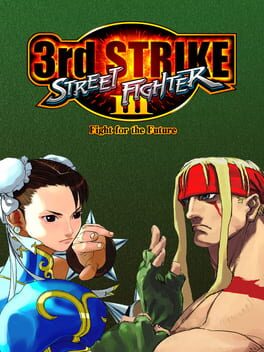Bio
I do not exist
I do not exist
Badges

Trend Setter
Gained 50+ followers

Best Friends
Become mutual friends with at least 3 others

Loved
Gained 100+ total review likes

3 Years of Service
Being part of the Backloggd community for 3 years

Well Written
Gained 10+ likes on a single review

Gamer
Played 250+ games

N00b
Played 100+ games

Popular
Gained 15+ followers

Noticed
Gained 3+ followers

Liked
Gained 10+ total review likes
Favorite Games
469
Total Games Played
000
Played in 2024
000
Games Backloggd
Recently Played See More
Recently Reviewed See More
If I had to describe 3rd strike in one word that would be "freedom". The game gives players a plethora of options in any situation. This is by design and has been discussed by Shinichiro Obata [1]: the game is built around "unanswerables" - the idea of creating situations with no clear answers/solutions/resolutions. This is done in order to avoid gameplay based around preset knowledge of situations, and instead emphasizes RPS mechanics more than other games in the genre. But how is this achieved in the game and what are its consequences?
The key to achieving such freedom is the heavy reliance on universal mechanics. The parry is an obvious example of this, along with mechanics such as the throw protection after blockstun/wakeup, crouch teching (also the extra damage done to crouching opponents). With the existence of those few mechanics, the player has plenty of tools at their disposal, that are universal across characters. There are no situations where the pool of answers is severely limited. Additionally, while some options cover a broader range of actions, the game always has a way to reward guessing the exact action that the other player will take. Because of this, every single decision carries risk and nothing is truly safe. Blocking is still the "safest" option, but it can be opened up by overheads into confirms and command grabs for reasonable damage. If that is not in a character's toolkit, then the simple throw loop in the corner can force out a reaction other than blocking. All of this contributes to creating an extremely unpredictable playstyle. Habits and predictable play can be punished severely, resulting in a game that promotes more attentive play and non-rigid playstyles.
Let's take a look at a practical situation in which those tools come into play. Dudley is a character with a strong 50/50 of an overhead or a low hit confirms that could lead to yet another 50/50 each time it is successful. If it is blocked correctly it leads back to neutral. In most other fighting games, without considering reversals (which still exist in 3S), this would be a situation where Dudley can use his absurd okizeme to play in a highly beneficial position. However, since this is 3S the opponent can always go for the parry instead. If successful it would give the defender a very strong combo in retaliation and more pressure afterwards as well. This turns the 50/50 into a double-edged sword. Yet while parrying is strong it still has its own counters - throws, delayed meaties, normals into cancels. In turn these have their own counters. The key takeaway is that, starting from 2 options (and potentially a throw sometimes), that would be the most efficient in most other fighting games, we get to create a variety of new options both sides have to consider and can use viably.
It is important to mention that those tools also limit the theoretical knowledge needed to play the game. While there is knowledge that could benefit a player, any situation provides enough information by itself for its resolution (answer). While frame data has its usage, it takes a backseat to elements like the pushback and ways in which an attack can be parried (low/high or both). Both of those elements can be deduced from the visuals alone. Even if it is a player's turn/a player has priority/advantage, the threat of a parry can steal that turn. This can be used both to escape pressure situations from frame traps or to even further your own pressure - the parry is a tool that can be used both defensively and offensively. Character specific tools still have their play, but rather than limiting or completely substituting your universal options, they tend to instead give you completely new options and create new situations.
All of it leads to some of the most unpredictable matches that one can find in the genre, while also being reasonably easy to play. It does require knowledge of those universal mechanics, but while more specific knowledge is helpful, it is often not required.
[1] If you want to read it for yourself I recommend the SF3 an oral history feature from polygon, the topic in question is discussed in the final bit of the interview.
The key to achieving such freedom is the heavy reliance on universal mechanics. The parry is an obvious example of this, along with mechanics such as the throw protection after blockstun/wakeup, crouch teching (also the extra damage done to crouching opponents). With the existence of those few mechanics, the player has plenty of tools at their disposal, that are universal across characters. There are no situations where the pool of answers is severely limited. Additionally, while some options cover a broader range of actions, the game always has a way to reward guessing the exact action that the other player will take. Because of this, every single decision carries risk and nothing is truly safe. Blocking is still the "safest" option, but it can be opened up by overheads into confirms and command grabs for reasonable damage. If that is not in a character's toolkit, then the simple throw loop in the corner can force out a reaction other than blocking. All of this contributes to creating an extremely unpredictable playstyle. Habits and predictable play can be punished severely, resulting in a game that promotes more attentive play and non-rigid playstyles.
Let's take a look at a practical situation in which those tools come into play. Dudley is a character with a strong 50/50 of an overhead or a low hit confirms that could lead to yet another 50/50 each time it is successful. If it is blocked correctly it leads back to neutral. In most other fighting games, without considering reversals (which still exist in 3S), this would be a situation where Dudley can use his absurd okizeme to play in a highly beneficial position. However, since this is 3S the opponent can always go for the parry instead. If successful it would give the defender a very strong combo in retaliation and more pressure afterwards as well. This turns the 50/50 into a double-edged sword. Yet while parrying is strong it still has its own counters - throws, delayed meaties, normals into cancels. In turn these have their own counters. The key takeaway is that, starting from 2 options (and potentially a throw sometimes), that would be the most efficient in most other fighting games, we get to create a variety of new options both sides have to consider and can use viably.
It is important to mention that those tools also limit the theoretical knowledge needed to play the game. While there is knowledge that could benefit a player, any situation provides enough information by itself for its resolution (answer). While frame data has its usage, it takes a backseat to elements like the pushback and ways in which an attack can be parried (low/high or both). Both of those elements can be deduced from the visuals alone. Even if it is a player's turn/a player has priority/advantage, the threat of a parry can steal that turn. This can be used both to escape pressure situations from frame traps or to even further your own pressure - the parry is a tool that can be used both defensively and offensively. Character specific tools still have their play, but rather than limiting or completely substituting your universal options, they tend to instead give you completely new options and create new situations.
All of it leads to some of the most unpredictable matches that one can find in the genre, while also being reasonably easy to play. It does require knowledge of those universal mechanics, but while more specific knowledge is helpful, it is often not required.
[1] If you want to read it for yourself I recommend the SF3 an oral history feature from polygon, the topic in question is discussed in the final bit of the interview.
The best iteration of Quake movement!
Miasmata is a game that focuses on exploration, without relying on other game elements, such as rewards, to push the player to explore.
The game achieves this through 3 gameplay elements: the movement, the map system and the level itself.
The movement is clunky - the player character has momentum and can slip easily. Additionally, there is a tumbling mechanic which punishes the player for careless movements. The punishment is in the form of fever(the analogue to fever in other games is damage/health). It hinders the mobility of the player, makes them lose control for a few moments, disorients them briefly, and changes their position due to the tumbling itself. This serves to make the player mindful of the terrain and their movement speed. You can't move around the world by just holding w and run.
The map system encourages the player to keep track/be aware of their position in the world. There is no minimap, and the map does not show the player's position. To obtain the position, triangulation should be used. This is done by using man-made objects on the island, which are already drawn on the map. By having direct line of sight to them the player could obtain their position and fill in the map around them.
Furthermore the player can use their position to try to determine the location of other man-made objects. Similar to the inconveniences related to the movement, the ones associated with the map also have the goal of making the player more mindful of the terrain. This is in contrast to other games where the terrain merely serves as background decoration. In Miasmata the terrain also affects the line of sight of the player, which can hinder triangulation.
The level itself is composed of open to explore a set of islands, with camps acting as save points and stations to heal yourself and refill basic resources, statues that are used for long-range triangulation, inner monuments and relic buildings acting as guides for the player to figure out their location while within the island.
Forests make it near impossible to locate yourself on the map via triangulation from within one, this is where the aforementioned monuments and relic buildings aid the player. While this is a downside of the forests, they also have a lot of drinkable water, plenty of hiding spots, if there is an encounter with a monster and also paths. It is by far, the fastest way to travel the map through them, especially with the use of a compass, but it should be mentioned that there are many interweaving paths, and the player could get lost easily, and will.
Contrary to the forests inland, the player could travel by the coastlines as well. They have the advantage of free line of sight, making triangulation easier, but at the same time it takes longer to travel the world using them, and lack hiding spots, making encounters with the monster more dangerous.
Lastly the player might climb hills and mountains to locate their position inland, using the elevation and the free line of sight to triangulate. They could also use them to locate other man-made objects around the island.
Most of the gameplay is about traveling between 2 different outposts. In there the player is mostly racing against time, as when the night falls, it is extremely difficult to navigate, and encounters with the monster are likely to end up being fatal. The survival elements itself are simple, the player could not really stockpile on resources, and instead can carry 1 of each type of medication. They serve as a basic heal for the fever, a small buff to the movement, an extra buff that helps with dealing with the monster, and an easy way to locate yourself on the map. They also have a canteen, that could only be refilled with fresh water and the player should drink regularly especially if they run a lot. It should be noted that triangulation takes a lot of ingame time, so if the player is focused on filling on the map, or relies on it too much to figure out their position, they might not reach their destination before nightfall.
After reaching a new outpost, it could be used to safely explore the area around it for herbs. They can be used to craft the aforementioned resources, as well as crafting the cure for the plague, which is the main objective in the game. The crafting itself is done in special camps.
All in all, those elements provide a way more mentally engaging approach to exploration in games. The game itself isn't really challenging, but instead would take longer to complete with unskilled play. It is a very relaxing game and to my knowledge there isn't a game currently that could do the things it does better.
The game achieves this through 3 gameplay elements: the movement, the map system and the level itself.
The movement is clunky - the player character has momentum and can slip easily. Additionally, there is a tumbling mechanic which punishes the player for careless movements. The punishment is in the form of fever(the analogue to fever in other games is damage/health). It hinders the mobility of the player, makes them lose control for a few moments, disorients them briefly, and changes their position due to the tumbling itself. This serves to make the player mindful of the terrain and their movement speed. You can't move around the world by just holding w and run.
The map system encourages the player to keep track/be aware of their position in the world. There is no minimap, and the map does not show the player's position. To obtain the position, triangulation should be used. This is done by using man-made objects on the island, which are already drawn on the map. By having direct line of sight to them the player could obtain their position and fill in the map around them.
Furthermore the player can use their position to try to determine the location of other man-made objects. Similar to the inconveniences related to the movement, the ones associated with the map also have the goal of making the player more mindful of the terrain. This is in contrast to other games where the terrain merely serves as background decoration. In Miasmata the terrain also affects the line of sight of the player, which can hinder triangulation.
The level itself is composed of open to explore a set of islands, with camps acting as save points and stations to heal yourself and refill basic resources, statues that are used for long-range triangulation, inner monuments and relic buildings acting as guides for the player to figure out their location while within the island.
Forests make it near impossible to locate yourself on the map via triangulation from within one, this is where the aforementioned monuments and relic buildings aid the player. While this is a downside of the forests, they also have a lot of drinkable water, plenty of hiding spots, if there is an encounter with a monster and also paths. It is by far, the fastest way to travel the map through them, especially with the use of a compass, but it should be mentioned that there are many interweaving paths, and the player could get lost easily, and will.
Contrary to the forests inland, the player could travel by the coastlines as well. They have the advantage of free line of sight, making triangulation easier, but at the same time it takes longer to travel the world using them, and lack hiding spots, making encounters with the monster more dangerous.
Lastly the player might climb hills and mountains to locate their position inland, using the elevation and the free line of sight to triangulate. They could also use them to locate other man-made objects around the island.
Most of the gameplay is about traveling between 2 different outposts. In there the player is mostly racing against time, as when the night falls, it is extremely difficult to navigate, and encounters with the monster are likely to end up being fatal. The survival elements itself are simple, the player could not really stockpile on resources, and instead can carry 1 of each type of medication. They serve as a basic heal for the fever, a small buff to the movement, an extra buff that helps with dealing with the monster, and an easy way to locate yourself on the map. They also have a canteen, that could only be refilled with fresh water and the player should drink regularly especially if they run a lot. It should be noted that triangulation takes a lot of ingame time, so if the player is focused on filling on the map, or relies on it too much to figure out their position, they might not reach their destination before nightfall.
After reaching a new outpost, it could be used to safely explore the area around it for herbs. They can be used to craft the aforementioned resources, as well as crafting the cure for the plague, which is the main objective in the game. The crafting itself is done in special camps.
All in all, those elements provide a way more mentally engaging approach to exploration in games. The game itself isn't really challenging, but instead would take longer to complete with unskilled play. It is a very relaxing game and to my knowledge there isn't a game currently that could do the things it does better.
